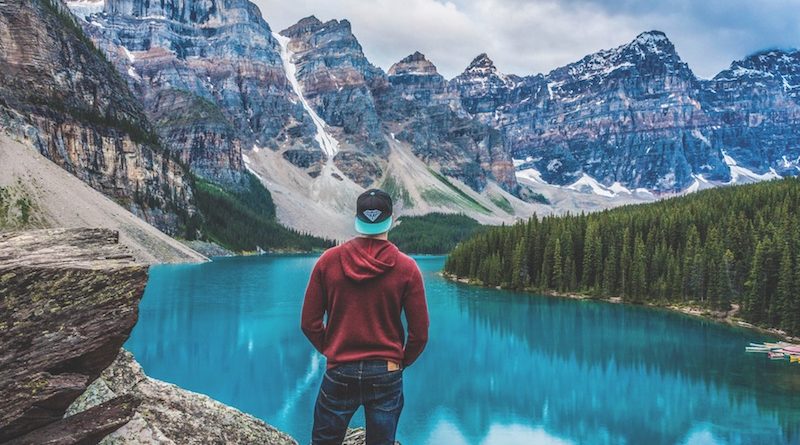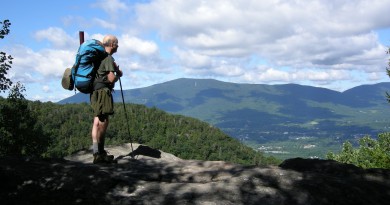7 Mountains I Did Not Conquer
If you want to quiet your inner-Alex Honhold (and extinguish any urge to freeclimb El Capitan), just read this.
BY LEATH TONINO
Author Leath Tonino has shoveled snow in Antarctica, worked as a
wildlife biologist in Arizona, and has skied, paddled, biked and hiked the length of Vermont. But there are a few things he hasn’t done—namely, climb (most of these) mountains.
1. Mount Erebus, Antarctica
It’s the world’s southernmost active volcano, a hulking ice monster with a beating magmatic heart. Need I say more? Okay, I’ll say more. I was working for the United States Antarctic Program at the time, and my superiors—who were many—kept telling me that I was at The Bottom of The World to shovel snow, not go on adventures. They explained that should I wander from the station, drawn heavenward by the promise of soul-purifying solitude or “whatever it is dudes like you [me] get off on,” my contract would be terminated, and I would be sent home. On top of that, they said, I would die. The volcano seemed to confirm this last part.
2. La Plata Peak, Colorado
Chris remembered his ice axe but forgot his boots. And his pants. It was early December and our objective was the Ellingwood Ridge, two miles of confused jaggedness topped with a foot of fresh snow—horribly exposed, horribly loose, not for the faint of heart or, in our case, the faint of preparedness. Delicately, ever so delicately, I picked a line through the chaos. My stylish partner followed in tennis shoes and boxers worn over long underwear tights. The boxers were paisley patterned. A third of the way across we were forced to bail down a steep gully, not that I blame anybody or anything.
3. Sgùrr nan Gillean, Scotland
“It’s only a wee scramble,” my guide Eliot said, then repeated it again as if I hadn’t heard him the first time, although he knew I had. We were stuck on a small ledge in the rain on the Isle of Skye’s Pinnacle Ridge. The rock: sharp, black gabbro. The rain: increasing. The surrounding peaks: terrifying names like Sgùrr Dearg and Basteir Tooth. I replied that there was nothing wee about the situation. Eliot, a mostly drunk, mostly chain-smoking, mostly fearless Glaswegian, said that I was being wee. It took many pints at the pub that evening to resolve this difference of opinion.
4. Mount Ritter, California
Of his first ascent, back in 1872, John Muir wrote the following: “After gaining a point about half-way to the top, I was brought to a dead stop, with arms outspread, clinging close to the face of the rock, unable to move hand or foot either up or down. My doom appeared fixed. I must fall. There would be a moment of bewilderment, and then a lifeless rumble . . . .” Sure, old, squirrely J.M. lived to tell the tale, but let’s recall that this was a man known for climbing Douglas firs in windstorms and rambling for weeks on end with only bread and tea for fuel. Anyway, I was on a backpacking trip with my lovely girlfriend Sophia. Who needs “lifeless rumble” when you’ve got “mac n’ cheese and cuddling?”
5. Mount Tom Taylor, British Columbia
Having bushwhacked 60 miles of hellacious thicket; having watched one member of our party tumble down a slope and stop three feet from the edge of a 100-foot cliff; having tiptoed around black bears; having lost ourselves in a haunted alpine fog; having edged up to insanity at the relentless behest of mosquito hoards; having run out of food, courage and hope (in that order), we finally reached the lake that led to the glacier that led to the peak. The peak we’d circled on our maps a lifetime ago. The peak we no longer cared to climb.
6. Middle Teton, Wyoming
There was ice in the couloir at 12,100 feet and I had no crampons, nothing better than a sharp rock for a self-arrest. I retreated to a lower meadow and consoled my thwarted ambition with a long snooze in the sun. When I awoke, there were marmots and pale blue butterflies flew like snowflakes around me. I was held in the embrace of alpenglow. I was wrapped in the joy of a plan abandoned, a desire released and forgotten. It was a joy, I thought then and still think now, that no summit could ever grant.
7. Camel’s Hump, Vermont
She’s my personal Mount Everest, my Sagarmatha, my Chomolungma, my Goddess Mother of the World. The first time I climbed her I was five years old and accompanied by my father and sister. Since then, I’ve stood atop her summit in snow and rain and brightness, alone and with friends, in the company of dogs and wild birds, in all seasons and moods. I’ve sipped from her springs and gulped down her clouds; I’ve eaten of her mossy, ferny flesh. I’ve slept with her, laughed with her, learned from her, suffered by her again and again and again. I’ve been up there, that’s all I’m saying. But conquer her? Conquer Camel’s Hump? Hardly. If anything, she has conquered me.
Contributing editor Leath Tonino is the author of The Animal One Thousand Miles Long: Seven Lengths of Vermont and Other Adventures. This essay originally appeared in Orion.
Featured Photo Caption: Sometimes, the view from below is better than summiting. Here, Lake Louise in Alberta, Canada. Photo by Mark Cort


